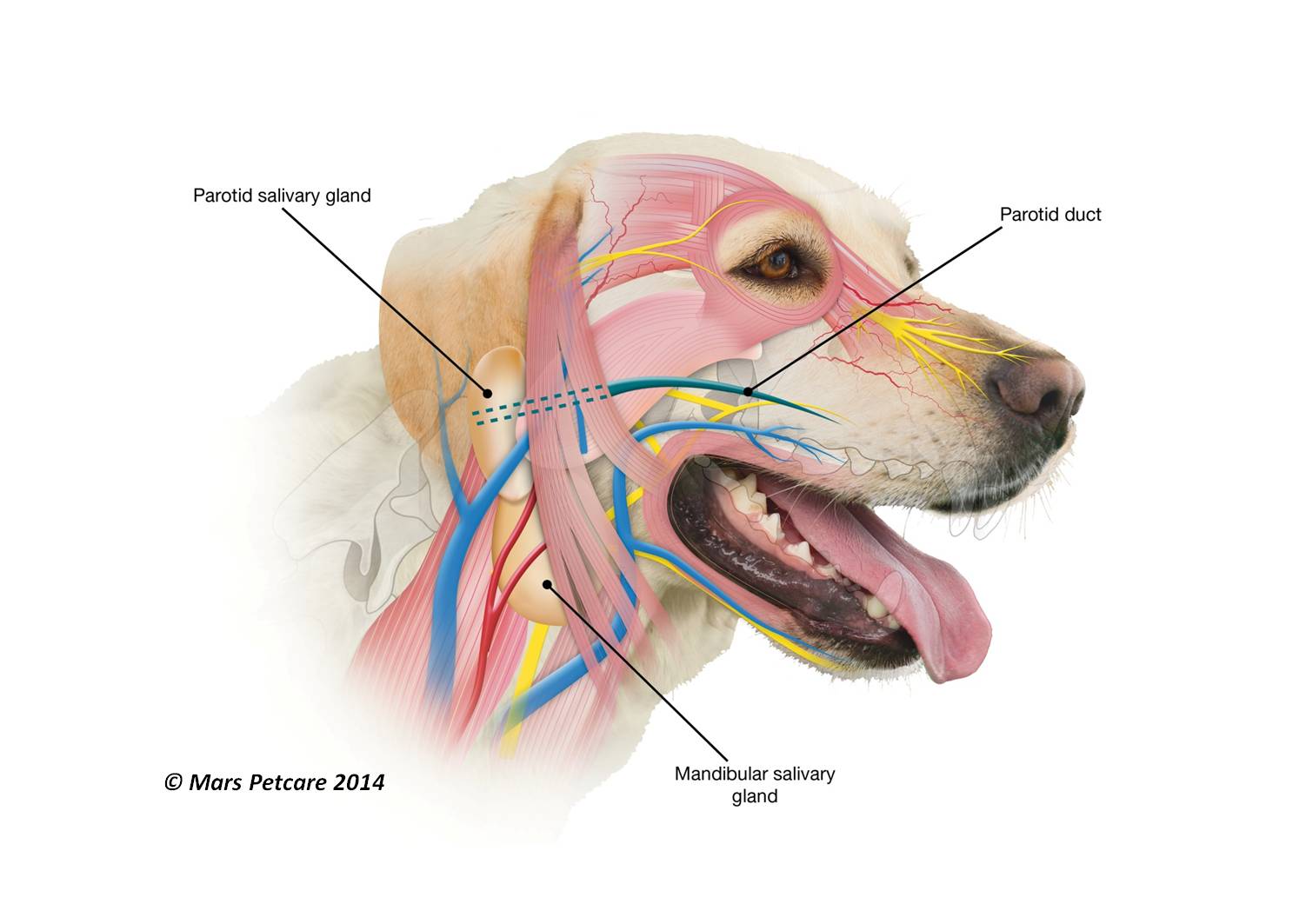Difference between revisions of "Parotid Gland - Anatomy & Physiology"
| Line 1: | Line 1: | ||
{{OpenPagesTop}} | {{OpenPagesTop}} | ||
==Overview== | ==Overview== | ||
| − | [[ | + | [[File:Salivary glands.jpg|Dog salivary glands]] |
The parotid salivary gland produces a [[Serous Salivary Gland - Anatomy & Physiology|serous]] secretion. It is moulded around the base of the [[Ear - Anatomy & Physiology#Outer Ear|auricular cartilage]] of the ear. It is enclosed within facial covering. | The parotid salivary gland produces a [[Serous Salivary Gland - Anatomy & Physiology|serous]] secretion. It is moulded around the base of the [[Ear - Anatomy & Physiology#Outer Ear|auricular cartilage]] of the ear. It is enclosed within facial covering. | ||
| Line 18: | Line 18: | ||
==Species Differences== | ==Species Differences== | ||
| − | |||
===Carnivores=== | ===Carnivores=== | ||
Revision as of 15:54, 1 October 2014
Overview
The parotid salivary gland produces a serous secretion. It is moulded around the base of the auricular cartilage of the ear. It is enclosed within facial covering.
Trabeculae divide the gland into lobules. Major ducts run within trabeculae and merge to form a single duct. The duct opens in the vestibule opposite the 4th upper premolar (not all species).
The parotid gland is innervated by the glossopharyngeal nerve (CN IX) via the trigeminal branch.
Development
Intercalated duct becomes a striated duct and cuboidal cells develop with mitochondria in the base. The duct develops into an interlobular duct. The cells become stratified columnar cells. The stratified squamous epithelium then becomes continuous with the epithelium lining of the oral cavity.
Histology
The parotid gland is a tubulo-acinar gland. It has a basophilic endoplasmic reticulum and a stratified squamous epithelium. It consists of acinar cells surrounded by myoepithelial cells and basement membrane.
Species Differences
Carnivores
The duct runs across the masseter muscle in carnivores and is superficial in the dog. The gland produces some mucous secretion in the cat and dog.
Herbivores
It is a larger gland with a higher flow rate in herbivores to lubricate and soften the food. The duct is superficial in small ruminants. The parotid gland extends rostrally over the masseter muscle, ventrally to the angle of the jaw and caudally towards the atlantal fossa. The duct runs ventrally in herbivores below the mandible (facial groove in horses) before entering the oral cavity at the rostral margin of the masseter muscle.
Equine
The gland overlies the guttural pouch.
| Parotid Gland - Anatomy & Physiology Learning Resources | |
|---|---|
 Test your knowledge using flashcard type questions |
Salivary Gland Anatomy & Physiology Flashcards |
 Selection of relevant videos |
Lateral section through the head of a dog |
Error in widget FBRecommend: unable to write file /var/www/wikivet.net/extensions/Widgets/compiled_templates/wrt6939903e09d9e2_18231377 Error in widget google+: unable to write file /var/www/wikivet.net/extensions/Widgets/compiled_templates/wrt6939903e1175f8_74867709 Error in widget TwitterTweet: unable to write file /var/www/wikivet.net/extensions/Widgets/compiled_templates/wrt6939903e167eb6_46452178
|
| WikiVet® Introduction - Help WikiVet - Report a Problem |
